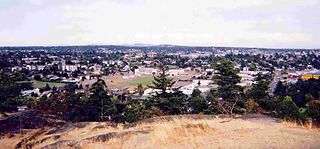
The Township of Esquimalt is a municipality at the southern tip of Vancouver Island, in British Columbia, Canada. It is bordered to the east by the provincial capital, Victoria, to the south by the Strait of Juan de Fuca, to the west by Esquimalt Harbour and Royal Roads, to the northwest by the New Songhees 1A Indian reserve and the town of View Royal, and to the north by a narrow inlet of water called the Gorge, across which is the district municipality of Saanich. It is almost tangential to Esquimalt 1 Indian Reserve near Admirals Road. It is one of the 13 municipalities of Greater Victoria and part of the Capital Regional District.

Greater Victoria is located in British Columbia, Canada, on the southern tip of Vancouver Island. It is usually defined as the thirteen municipalities of the Capital Regional District (CRD) on Vancouver Island as well as some adjacent areas and nearby islands.

Penelakut Island is located in the southern Gulf Islands between Vancouver Island and the mainland Pacific coast of British Columbia, Canada. The island has a population of about 300 members of the Penelakut Band. The island has an area of 8.66 square kilometres (3.34 sq mi). There is frequent car and passenger ferry service to Penelakut from Chemainus on Vancouver Island. On its west side sits Telegraph Harbour.

HMCS Chicoutimi is a Victoria-class long-range hunter-killer (SSK) submarine of the Royal Canadian Navy, originally built and operated by the Royal Navy as HMS Upholder. Shortly after being handed over by the United Kingdom to Canada she was involved in a partial flooding incident which resulted in a fire at sea. The incident sparked a fierce debate over the value of the purchase of this group of second-hand vessels, as well as the handover inspection process. The subsequent investigation "determined the fire was caused by human, technical and operational factors, [and] the board cleared the commanding officer and crew of any blame." The submarine was repaired and entered Canadian service in 2015.

The Pacific Station was created in 1837 as one of the geographical military formations into which the Royal Navy divided its worldwide responsibilities. The South America Station was split into the Pacific Station and the South East Coast of America Station.
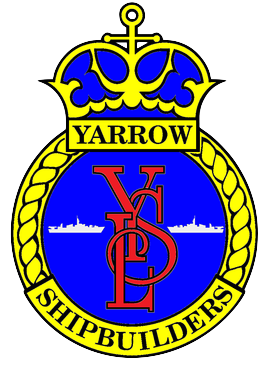
Yarrow Shipbuilders Limited (YSL), often styled as simply Yarrows, was a major shipbuilding firm based in the Scotstoun district of Glasgow on the River Clyde. It is now part of BAE Systems Surface Ships, owned by BAE Systems, which has also operated the nearby Govan shipyard since 1999.

The Orca-class patrol vessels are a class of eight steel-hulled training and surveillance vessels in service with the Royal Canadian Navy (RCN) at Patrol Craft Training Unit (PCTU) Canadian Forces Base (CFB) Esquimalt. Based on the Australian Pacific-class patrol boat design, all of the Orca vessels were constructed by Victoria Shipyards between November 2004 and November 2008. In addition to carrying the RCN designation of patrol craft training (PCT), the Orca class are not formally commissioned in the RCN and as such do not possess the His Majesty's Canadian Ship (HMCS) prefix.

Royal Navy Dockyards were state-owned harbour facilities where ships of the Royal Navy were built, based, repaired and refitted. Until the mid-19th century the Royal Dockyards were the largest industrial complexes in Britain.
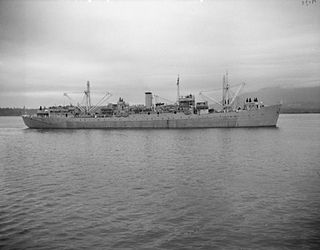
HMCS Cape Breton was a Royal Canadian Navy Cape-class maintenance ship. Originally built for the Royal Navy as HMS Flamborough Head in 1944, she was transferred in 1952. Upon her commissioning she was the second ship to bear the name Cape Breton. She served operationally from 1953–1964, when she was laid up. She was used as a floating machine shop until the late-1990s, before being sold for use as an artificial reef off the coast of British Columbia.

Canadian Forces Base Esquimalt is Canada's Pacific Coast naval base and home port to Maritime Forces Pacific and Joint Task Force Pacific Headquarters. As of 2018, 4,411 military personnel and 2,762 civilians work at CFB Esquimalt.
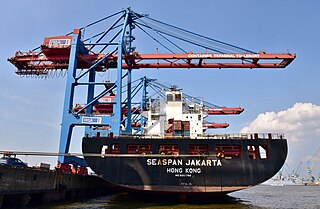
Seaspan ULC provides marine-related services to the Pacific Northwest. Within the Group are three (3) shipyards, an intermodal ferry and car float business, along with a tug and barge transportation company that serves both domestic and international markets. Seaspan, is part of the Washington Companies that are owned by Dennis Washington. Kyle Washington, is the Executive Chairman of Seaspan, who has become a Canadian citizen.
Allied Shipbuilders Ltd is a privately held shipbuilding and ship repairing company established in Canada in 1948.

Burrard Dry Dock Ltd. was a Canadian shipbuilding company headquartered in North Vancouver, British Columbia. Together with neighbouring North Van Ship Repair and Yarrows Ltd. of Esquimalt, which were both later purchased by the company, Burrard built and refitted over 450 ships, including many warships for the Royal Navy and Royal Canadian Navy during the First and Second World Wars.

In the Canadian Armed Forces, Maritime Forces Pacific is responsible for the fleet training and operational readiness of the Royal Canadian Navy in the Pacific Ocean. It was once referred to as Canadian Pacific Station.

Victoria Harbour is a harbour, seaport, and seaplane airport in the Canadian city of Victoria, British Columbia. It serves as a cruise ship and ferry destination for tourists and visitors to the city and Vancouver Island. It is both a port of entry and an airport of entry for general aviation. Historically it was a shipbuilding and commercial fishing centre. While the Inner Harbour is fully within the City of Victoria, separating the city's downtown on its east side from the Victoria West neighbourhood, the Upper Harbour serves as the boundary between the City of Victoria and the district municipality of Esquimalt. The inner reaches are also bordered by the district of Saanich and the town of View Royal. Victoria is a federal "public harbour" as defined by Transport Canada. Several port facilities in the harbour are overseen and developed by the Greater Victoria Harbour Authority, however the harbour master's position is with Transport Canada.

HMS Cormorant was an Osprey-class sloop launched at Chatham on 12 September 1877 and later the receiving ship at Gibraltar. She was renamed Rooke in 1946 and broken up in 1949.

HMS Thetis was a 36-gun fifth-rate frigate of the Royal Navy. After nearly a decade of service with the British, she was transferred to Prussia in exchange for two steam gunboats. She served with the Prussian Navy, the North German Federal Navy and the Imperial German Navy as a training ship until being stricken in 1871. Thetis was subsequently converted into a coal hulk and broken up in 1894–95.

Esquimalt Harbour is a natural harbour in Greater Victoria on the southern tip of Vancouver Island in British Columbia, Canada. The entrance to Esquimalt Harbour is from the south off the Strait of Juan de Fuca through a narrow channel known as Royal Roads. Esquimalt Harbour is situated east of Victoria Harbour, another major harbour in the region. Esquimalt Harbour is home to the Royal Canadian Navy's Maritime Forces Pacific, based at CFB Esquimalt.
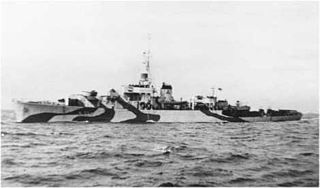
HMCS Prince Rupert was a River-class frigate that served with the Royal Canadian Navy during the Second World War. She served primarily as a convoy escort in the Battle of the Atlantic. She was named for Prince Rupert, British Columbia.



















